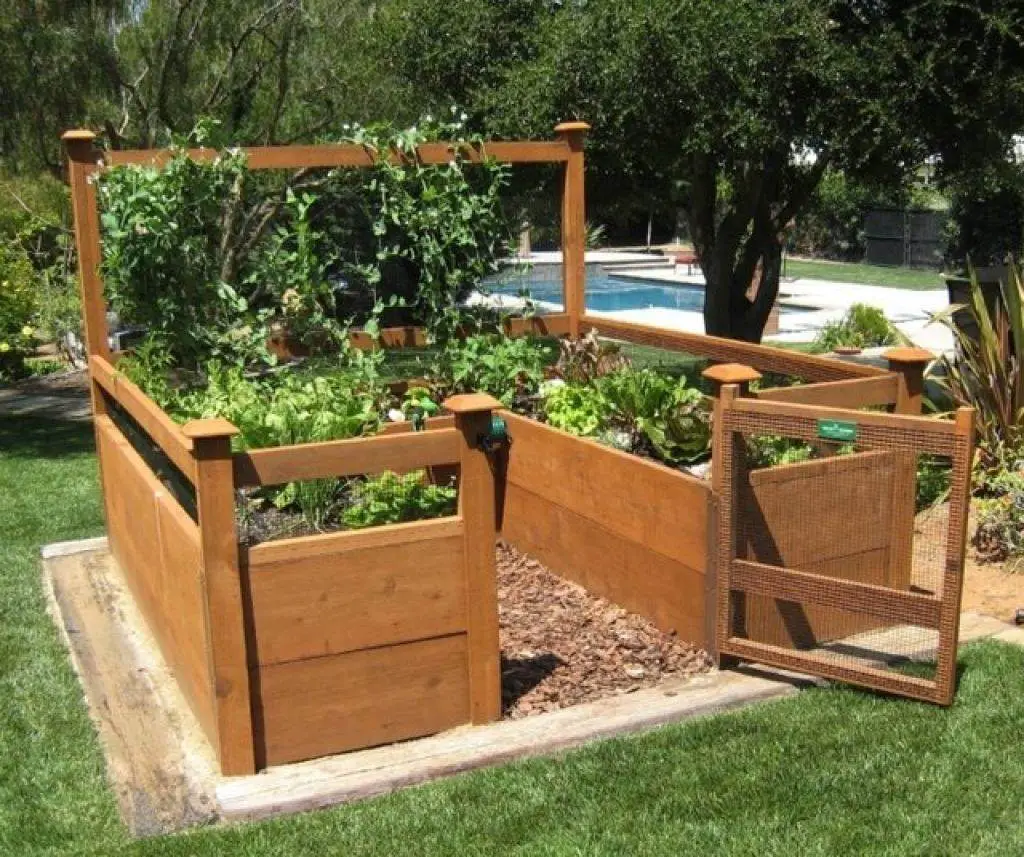
Add woodchips, bark or paving stones to the paths to prevent problems with mud. Keep the walkways as dry as possible to help control weeds. This material will be pretty well decomposed by spring, and planting can proceed on schedule. Cover the beds with 2 inches of leaves or other organic material each winter. Use compost to provide nutrients during the summer. Organic matter decomposes and disappears, so add more of it often. Place stakes at the corners of unframed beds to prevent hose dragging from damaging plants and degrading the beds. Once the shaping or framing is finished, keep traffic in the paths and do not step in or otherwise compact your nicely prepared planting beds. Beds that are longer than 6 feet or taller than about 18 inches should be reinforced (with cross cable, anchored stakes, or other mechanisms) to help prevent the weight of the soil from pushing the boards outwards (Figure. Keep in mind that the framing material will need to support the weight of soil, plants, and irrigation water. Framed beds can be as simple or decorative as you wish (see Figure 2 for examples of typical raised beds). Then, mark out the area and build your raised bed. One way to do this is by physically removing the above-ground portion of the plants and digging out any large root masses. If there is existing heavy vegetation, it is best to remove it.

And consider site preparation where the bed will be located. Setting up inline irrigation systems is easiest at this step because they may require water lines to be placed in the bed before it is filled with soil. Think about the type of equipment you need to move between beds for example, will your wheelbarrow fit? Consider your plans for watering the beds. Framed raised beds can be placed closer together than unframed beds, but you will still need to incorporate walkways. Next, consider your site and plan the beds. When the elevated area is raked level, the natural slope of the soil will leave about 36 inches of flat planting space on top of the 48-inch-wide bed. This creates a soil-and-organic mix about 8 inches deep, sufficient for adequate rooting of most vegetable plants.

A cubic yard will cover 162 square feet 2 inches deep, so you will need 6 to 7 cubic yards per 1,000 square feet. Spread a 2- to 3-inch layer of organic material over the soil surface. To create a mound, you will need to add additional soil and/or organic material.Do not rush this step wait until the soil is dry enough to crumble easily and not turn up in large chunks. If the soil is compacted, an initial rototilling is helpful, even if only 2 or 3 inches deep.

But the following method permits good garden production in the first year after a relatively simple soil modification process. Unframed raised beds usually require a great deal of spading, sometimes over a number of years.


 0 kommentar(er)
0 kommentar(er)
